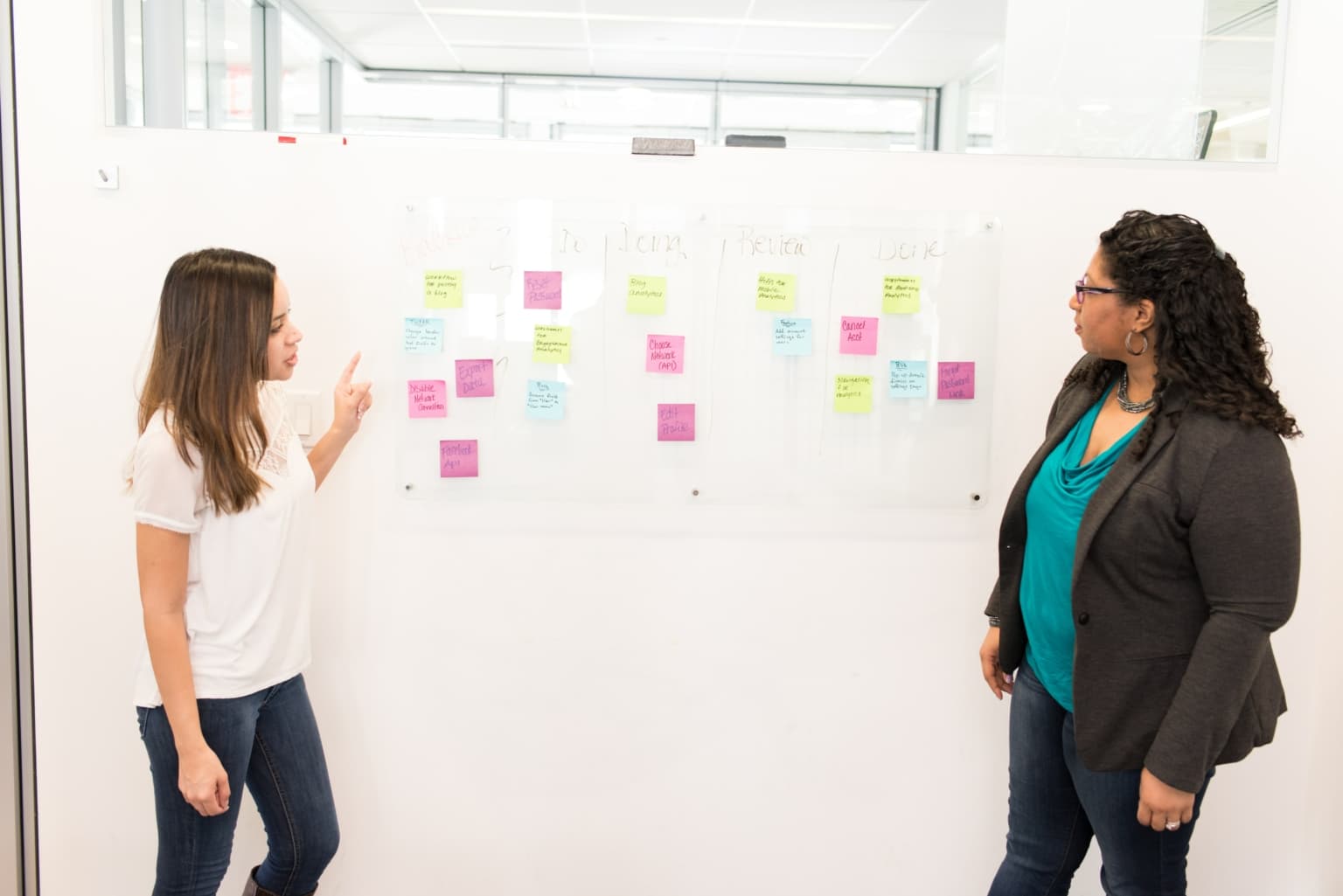To “future-proof” an organization (or product or service) means to ensure it does not become obsolete. Future-proof your workforce in today’s tech-driven world with this comprehensive guide.
Technology is shaping the workforce in ways we couldn’t fathom just a few short years ago. By only staying up-to-date on the latest skills, trends, and technologies out there you are all but guaranteed to allow obsolescence to creep into your organization. It’s not enough to be current, we have to think ahead now if our product, service, brand, and org will be relevant in the future.
This isn’t just about the tech – more than anything else it’s about the people using the technology every day. It’s about your workforce and what they achieve with the technology your organization invests in.
Nothing about this process will be cookie-cutter, but rather will take a tailored and nuanced approach. Each industry and organization will have its own hurdles to tackle, but there is a general framework we can allow to helpfully guide us.
In this article we discuss different approaches and strategies you can leverage to future-proof your workforce.
Future-Proof Your Workforce
1. Enhance Knowledge Sharing Across Your Organization
It is soooooo easy to let subject matter experts become silos of invaluable information. After all, it takes thought, time, and effort to capture that information. Unfortunately, this is an enormous waste of resources for countless people’s daily workflows. To require each contributor to “figure it out on their own” when there are masters sitting right across from them makes no sense, an is certainly not efficient or effective. Only frustrating and wasteful. The good news is that sharing knowledge across your organization doesn’t have to be difficult, boring, expensive, or even time-consuming. Seriously. On the contrary, you can make anyone in your org a subject matter expert in their own right, all with tools and people that already exist. It’s time for you to tap into this most valuable, yet underappreciated, asset: knowledge sharing.
2. Embrace peer-led education
Peer-led education occurs when colleagues (or students or teammates) teach each other skills. There are countless reasons why teaching each other is more beneficial than other ways of learning, and necessary to future-proof your workforce.
First of all, the teacher benefits from being able to share their knowledge. The best way to learn – and perfect- something is to explain an idea or process to others. Your SME’s will benefit from growing their teaching and people skills sets. Carleton College participates in peer-led education in some of its classes, and their research shows that it “reinforces the breadth and depth of their (the teachers’) own learning.”
Secondly, peer-led education allows colleagues to interact and connect in ways that most other daily interactions don’t. Interacting in a curious, learning environment fosters professional relationships. Peer-led education has proven to result in higher motivation, engagement, and performance. Carleton College studies also showed that students who participated were more likely to receive an A or B in the class compared to student groups without this learning supplement. The peer-led education students also scored higher on standardized tests.
3. Ask SME’s to share knowledge in a video and document format

You know your organization’s most valuable subject matter experts. To future-proof your workforce, you will need to capture the knowledge of these key players and experts and disseminate it across the correct teams. The most reasonable, hassle-free, and updataeble way to do this is with instructional video. There are many reasons why video tutorials are ideal.
First, video does not require any additional equipment, training, or money. You simply need your subject matter expert and a functioning laptop. Using a helpful tool, such as Weet, which allows you to record, edit, share, update, and store your videos in one place will be invaluable. Also consider that video will capture your expert’s knowledge better than text. We can hear the speaker’s tone, see their emotions and expressions, and communicate exponentially more face-to-face than with text alone. It’s also obvious that video – and screen share- make it exponentially easier to explain complex concepts, as compared to writing out the explanation. Most importantly, your audience will learn more with video than with text alone. If a picture speaks a thousand words, then a video speaks a million. When viewers see a demonstration of what they are being taught they can understand the concept and retain the information better.
4. Update SME knowledge base regularly
It is imperative that the information that your subject matter experts share is updateable. Of course, you should update these videos when major changes take place in the organization, but you must be more careful to make sure all of the information remains relevant and updated. To do this, create a spreadsheet with a list of all SME videos in your knowledge base, then create a calendar to regularly update these videos. Review and update these videos on a regular cadence.
Part of being prepared to future-proof your workforce is being flexible and ready for change. That being said, be prepared for experts to come and go. When a subject matter expert departs, capture their knowledge in video tutorial form before they leave. When new knowledge is uncovered, a better workflow discovered, or a better solution found, update that video! Again, using a video tool that does not make this process incredibly tedious is key. Look for a tool that allows you to update your video without altering the original link or forcing you to record a new video.
5. Eliminate the need for live 1:1 meetings
You don’t need your subject matter experts to allot their valuable time to training – over and over again. Leverage their skills where they are needed most rather than constantly utilizing them in 1 on 1 trainings. Learners benefit by moving at their own pace and collaborating when necessary, and SME’s benefit when their time is freed up for more valuable activities. It truly is a win-win in this case, for all those involved in the org.
6. People can access knowledge at any time and place

It is important that learners can access an entire training – including any detail they could have missed – at any time. This eliminates the inevitable times where people forget, and would otherwise reach out to an SME to repeat an answer, workflow, or idea. Consequently, this allows the learner to move at their own pace. And it encourages and empowers them to look for answers themselves. When the learner knows the content well and can navigate easily, they can reference it unerringly and easily direct others with the same questions there. Make sure the content the subject matter makes is top-notch and answers all relevant questions! When there are questions, make sure the video tutorial tool you are using is collaborative, so these questions can be answered -asynchronously – and all can see the answers. If the entire training is constantly accessible, searchable, and well-organized, then learners will feel empowered to find the answers on their own. It will ensure they know the material well and can review it as many times as needed.
7. Free up your SME’s to put their knowledge to better use than training on a regular basis
Keep your subject matter experts’ time free for more important tasks than regularly training new employees. They can record that same information once for the organization to share as many times as they want. Make sure to use a collaborative tool that allows learners to ask questions, and teachers to answer. Comment with webcam, screen share, audio, or text with a tool like Weet. We don’t want to cut learners off from teachers, only to rid your organization of redundancy. This way learners can ask questions when they arise and haven’t been answered, and everyone else ideally could see the question and answer moving forward.
8. Create and continue to cultivate a collective tech-savvy mindset
Having a workforce that is open-minded about tech, innovation, and trying new things doesn’t just happen. You have to think ahead, hire for it, and hone it. To future-proof your workforce, you’ll require a group of people with the skills and mindset to overcome ever-bigger challenges with new tools. Make a commitment to hire individuals with these goals and outlooks, as well as to work with your existing workforce to continue to learn and grow both in and out of work.
9. Embrace new ways of working, and take on fresh challenges

Let your teams know from the very beginning, or at least starting right now, that the culture in your workforce embraces the ideals you value most when future-proofing your workplace. You can ask directly how comfortable candidates are with trying new technologies, and adapting and changing workflows. Glean insight into whether it makes that person deeply uncomfortable or excited to try something new.
Some ideals to encourage may include:
- Trying new tools, softwares, and technologies
- Being excited about, rather than intimidated by, big and new challenges
- Continuing education outside of work, and having genuine support from the org and management
- Trying out new roles within the organization
- Generally allowing and fostering creativity in problem solving
10. Hire people who are passionate about tech and innovation
Don’t hire people that will work against your organization’s goals. Just like you shouldn’t hire people who lack a passion for what your organization is looking for, which is innovation in this case. People who do not share your organization’s goals and passions are easy to find. Some people thoroughly enjoy having a plan and a strict regimen in the workplace, and dislike changing that. If you hire people who are vehemently close-minded about new technologies and ways of doing things, then you cannot expect those same players to take charge of your future-proofing ventures.
Ask new hires about their ideas, experiences, and opportunities for improvements. You could very well even glean some valuable answers from potential colleagues! Most importantly though, you will get an idea of whether or not these potential candidates share your vision for the organization.
11. Allow employees to try a different role at work.

Do you have a Customer Service rep who is passionate and knowledgeable about IT? Or a floor saleswoman interested in accounting? Invite employees to explore their interests and talents within your organization.
For example, Singapore’s DBS Bank allows 50 employees a year to explore another role within the org for a month. The bank reports that “the initiative invests in employees, offering them growth paths and a door to new areas.” DBS can promote from within, create a happier work environment, and make sure people in their organization are utilizing their skills to the best of their abilities.
12. Transfer Employee Skill Sets
As technology finds its place within your organization, it will undoubtedly upset the status quo. This does not need to be a negative thing, believe it or not! Take, for example, the situation that DBS Bank found itself in when they replaced human bank tellers with automated tellers. Those human bank tellers have valuable skills to be utilized, and utilize them DBS did. The organization reworked tellers into social media roles where they talked to customers online as opposed to in person.
In this case, we see that DBS benefitted by future-proofing, and employees kept their jobs and upskilled their careers! There are countless examples of ways to transfer skill sets, and a wide array of them can be utilized in your workforce. It’s better for your organization that these human contributors use their time and energy on projects that can’t be accomplished by a computer. Transferring employee skill sets is key when you future-proof your workforce.
Future-Proof Your Workforce Conclusion
Now you have valuable tools at your disposal to help ensure your organization does not become obsolete. Organizations need to do more than simply keep “up-to-date” with technology and innovation – they will have to think ahead in order to continuously remain relevant. By using video to enhance knowledge sharing, eliminate timely 1:1 meetings, and cultivate a tech-savvy workplace, you can future-proof your workforce like DBS bank and countless other organizations.
Ready to leverage video to future-proof your workplace? Check out Speach.
Speach takes knowledge sharing platforms to the next level. Digital visualization is at the heart of Speach. Speaches are interactive, how-to videos that any employee can use to capture, transfer, and store knowledge, and it can be used in every aspect of your business. Supporting both iOS and Android, you can use it on any device right on the factory floor. If you are interested in learning more about a knowledge sharing solution that can keep pace with your changing operational environment, contact us to learn more about Speach or request a demo. We look forward to helping you transform the way you share knowledge.





